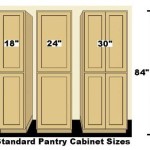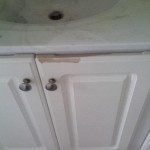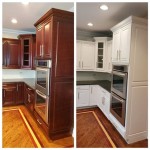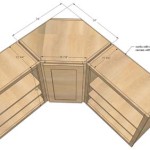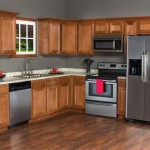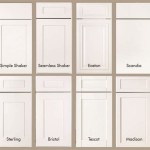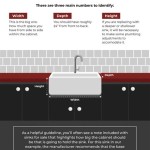The Allure and Application of Matt Black Paint for Kitchen Cupboards
Matt black paint has emerged as a prominent design choice in modern interiors, particularly for kitchen cabinetry. Its understated elegance, ability to conceal imperfections, and versatility in pairing with various design styles contribute to its growing popularity. This article explores the benefits, application techniques, and considerations associated with using matt black paint for kitchen cupboards, providing a comprehensive overview for homeowners and design professionals alike.
The aesthetic appeal of matt black lies in its non-reflective nature. Unlike gloss finishes that bounce light, matt black absorbs it, creating a velvety, soft appearance. This characteristic minimizes glare and allows the focus to remain on the cupboard's form and the surrounding decor. The color itself conveys sophistication and modernity while remaining neutral enough to complement a range of color palettes and materials.
Beyond aesthetics, practical advantages contribute to the appeal of matt black paint. Its ability to mask minor imperfections, such as surface scratches or irregularities, is particularly valuable in high-traffic areas like kitchens. The absence of a glossy sheen means that fingerprints and smudges are less noticeable compared to gloss or semi-gloss finishes, simplifying maintenance and upkeep. This makes matt black a practical choice for households with children or pets.
Advantages of Matt Black Paint for Kitchen Cupboards
The decision to use matt black paint for kitchen cupboards carries a number of benefits that extend beyond mere aesthetics. These advantages stem from the unique properties of matt finishes and their interaction with light and the surrounding environment.
Firstly, matt black excels at creating a sense of depth and sophistication. The color's ability to absorb light contributes to a more intimate and inviting atmosphere within the kitchen. It also provides a strong contrast against lighter elements, such as countertops, backsplashes, and appliances, drawing attention to these features and creating visual interest. This is particularly effective in kitchens with ample natural light, where the matt finish prevents excessive glare and maintains a comfortable visual experience.
Secondly, matt black is remarkably versatile and adaptable to diverse design styles. It integrates seamlessly into minimalist, contemporary, and industrial kitchens, while simultaneously adding a touch of drama and elegance to more traditional or transitional spaces. It pairs well with a wide array of materials, including wood, metal, glass, and stone, allowing for creative combinations and personalized design expressions. The inherent neutrality of black also ensures that it remains a timeless choice that transcends fleeting trends.
Thirdly, the ease of maintenance associated with matt black finishes is a significant advantage for busy households. As previously mentioned, the non-reflective surface minimizes the visibility of fingerprints, smudges, and minor imperfections. This reduces the frequency of cleaning and simplifies the process. Regular wiping with a damp cloth is typically sufficient to maintain the cleanliness and appearance of matt black kitchen cupboards, making it a practical and convenient choice for everyday use.
Preparation and Application Techniques
Achieving a flawless matt black finish on kitchen cupboards requires meticulous preparation and careful application. The success of the project hinges on proper surface preparation, the selection of appropriate paint products, and the implementation of suitable painting techniques.
The first step involves thorough cleaning of the cupboard surfaces. Remove any existing hardware, such as knobs and pulls, and degrease the surfaces with a suitable cleaner to eliminate any grease, oil, or dirt. This ensures proper adhesion of the primer and paint. For previously painted cupboards, sanding may be necessary to smooth out any imperfections and create a slightly rough surface for better paint adhesion. Use a fine-grit sandpaper (e.g., 220-grit) and sand lightly, ensuring to remove any loose paint or irregularities.
After sanding, wipe down the surfaces with a tack cloth to remove any sanding dust. Apply a primer specifically designed for kitchen cupboards. Priming is crucial for several reasons: it seals the surface, provides a uniform base for the paint, and enhances adhesion. Choose a high-quality primer that is compatible with both the existing surface and the chosen matt black paint. Allow the primer to dry completely according to the manufacturer's instructions.
When selecting the matt black paint, opt for a durable, high-quality product formulated for use on cabinetry. Consider factors such as scrub resistance, chip resistance, and resistance to moisture and grease. Acrylic latex paints are generally a good choice for kitchen cupboards due to their durability, ease of application, and low odor. Apply the paint in thin, even coats using a high-quality brush, roller, or sprayer. Avoid applying thick coats, as this can lead to drips, runs, and an uneven finish. Allow each coat to dry completely before applying the next. Two to three coats of paint are typically required to achieve full coverage and a uniform color.
For the smoothest possible finish, consider using a paint sprayer. A sprayer can provide a more consistent and even application than a brush or roller, minimizing brush strokes and roller stipple. However, spraying requires more preparation, including masking off surrounding areas to protect them from overspray. Regardless of the application method, ensure adequate ventilation during the painting process.
After the final coat of paint has dried completely, reattach the hardware and inspect the cupboards for any imperfections. Touch up any minor scratches or blemishes with a small brush. Allow the paint to cure fully before using the cupboards, typically for several days to a week, depending on the specific paint product.
Material Considerations and Potential Challenges
While matt black paint is suitable for a wide range of kitchen cupboard materials, certain considerations must be taken into account depending on the specific material. Additionally, potential challenges may arise during the application process, and understanding these challenges is crucial for achieving a satisfactory outcome.
For solid wood cupboards, proper sanding and priming are essential to ensure a smooth and even finish. Wood can absorb paint unevenly, so a good primer is critical to seal the grain and prevent discoloration. MDF (Medium Density Fiberboard) cupboards are typically easier to paint than solid wood, as they have a smooth, uniform surface. However, MDF is susceptible to moisture damage, so it is important to use a primer and paint that provide good moisture resistance.
Laminate cupboards present a unique challenge due to their slick, non-porous surface. To ensure proper paint adhesion, it is necessary to use a specialized bonding primer specifically designed for laminate surfaces. This primer creates a strong bond between the laminate and the paint, preventing peeling or chipping. Alternatively, consider lightly sanding the laminate surface with a fine-grit sandpaper to create a slightly rough texture for better paint adhesion.
One potential challenge associated with matt black paint is its tendency to show scratches and scuffs, particularly on darker shades. While matt finishes are generally better at concealing minor imperfections than gloss finishes, deeper scratches can still be noticeable. To minimize this issue, consider using a high-quality paint that is specifically formulated for durability and scratch resistance. Applying a clear topcoat, such as a matt varnish or sealant, can also provide added protection against scratches and scuffs. However, be aware that the topcoat may slightly alter the sheen of the paint.
Another challenge is achieving a uniform color and finish across all the cupboard surfaces. Variations in the application technique, such as uneven brush strokes or roller stipple, can result in a patchy or inconsistent appearance. To avoid this, apply the paint in thin, even coats and use a consistent application method. If using a brush or roller, maintain a steady hand and avoid applying too much pressure. If using a sprayer, ensure that the spray pattern is uniform and that you are maintaining a consistent distance from the surface.
Finally, achieving a true matt finish can be challenging, as some paints may have a slight sheen, even when labeled as "matt." To ensure a truly matt finish, test the paint on a small, inconspicuous area before applying it to the entire cupboard. If the paint has too much sheen, consider using a flattening additive to reduce the gloss level. These additives can be mixed into the paint to create a more matt appearance.

Rust Oleum Natural Charcoal Matt Kitchen Cupboard Paint 750ml

Painting Our Kitchen Cupboards Black Swoon Worthy

Rust Oleum Natural Charcoal Matt Kitchen Cupboard Paint 750ml

Rust Oleum Natural Charcoal Matt Kitchen Cupboard Paint 750ml

Rust Oleum Natural Charcoal Matt Kitchen Cupboard Paint 750ml

Rust Oleum Black Sand Matt Kitchen Cupboard Paint 750ml

Painting Our Kitchen Cupboards Black Swoon Worthy

Reinvented Classic Kitchen Design

Rust Oleum Black Sand Matt Kitchen Cupboard Paint 750ml

Black Cupboard Best Paint
Related Posts

